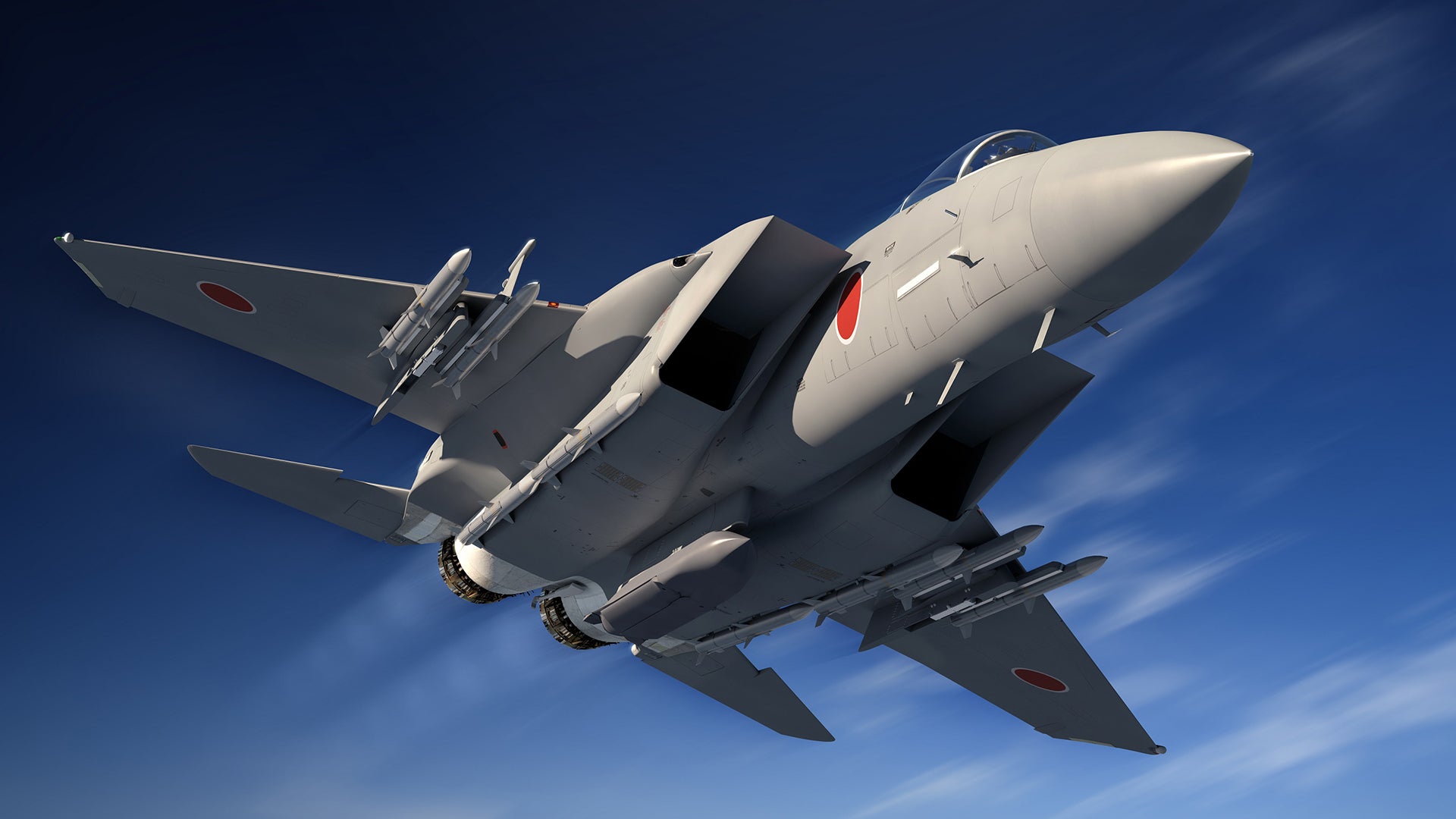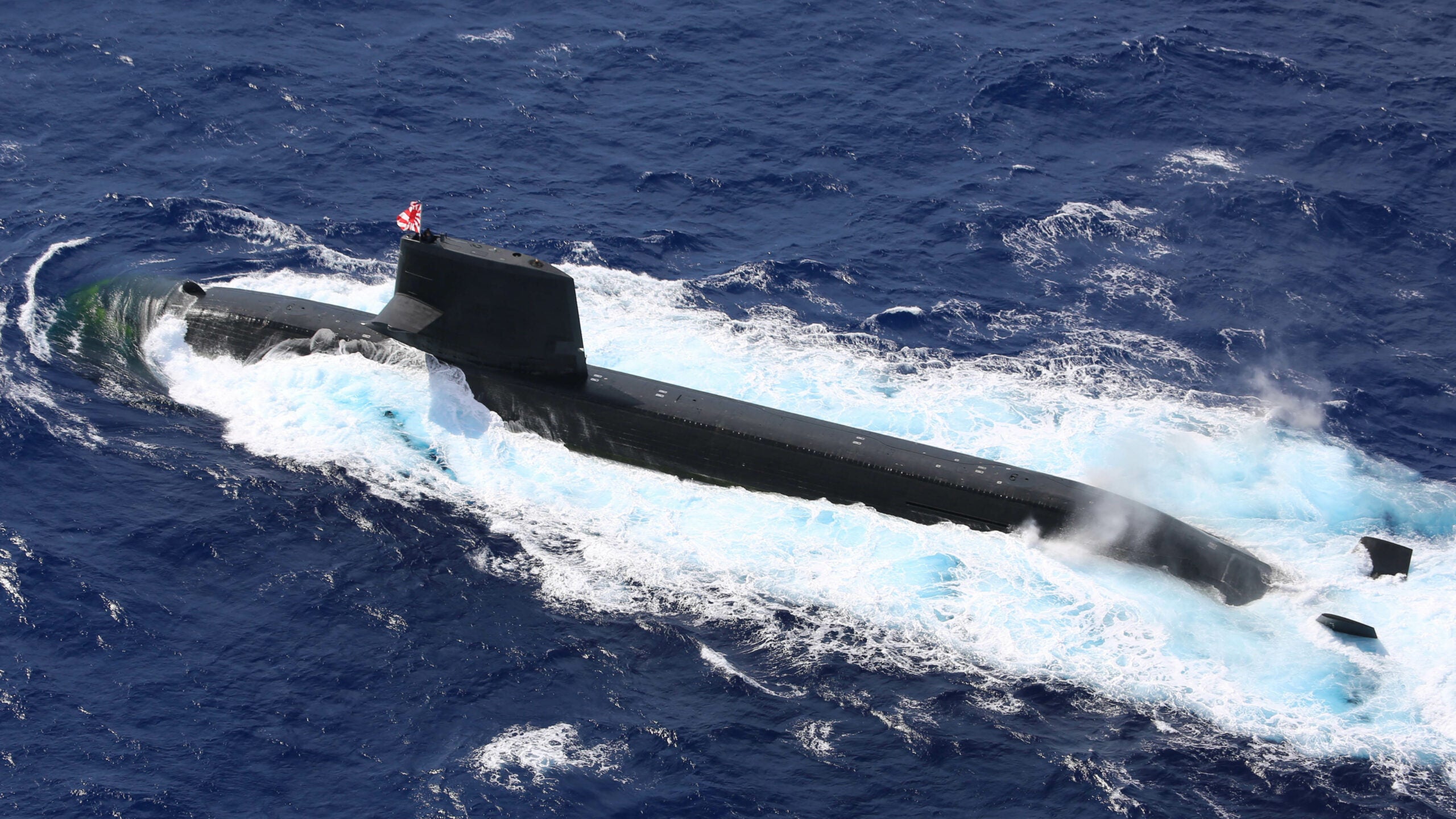Recent reports indicate that Japan is considering introducing a new long-range cruise missile capability to its existing submarine fleet, or future submarines, with a weapon that would have a range of over 620 miles and would be fielded from the latter half of the 2020s. The indigenous missile would provide the Japan Maritime Self-Defense Force, or JMSDF, with a new standoff capability to attack both enemy surface warships and land targets and is clearly seen as a potential counter to offset growing threats from China and North Korea.
A report in Japan’s Yomiuri Shimbun newspaper cites several unnamed government officials who confirm that Tokyo is looking at the possibility of equipping current and/or future JMSDF submarines with long-range cruise missiles. These would be derived from the Type 12 subsonic anti-ship missile that’s already in service with the Japan Ground Self-Defense Force, or JGSDF, and which has a range of around 124 miles in its current form. At this stage, both vertical launch system (VLS) and torpedo-tube-launched options are being examined for the new missile. As it stands, the JMSDF does not have any submarine-based VLS in service. There is also currently no confirmation of the size of magazine capacity being considered for the missile-armed submarines.

The Yomiuri Shimbun report stresses the potential for JMSDF submarines armed with the new cruise missiles to attack ground targets, in particular “enemy missile launch bases for the purpose of self-defense.” However, an accompanying graphic shows a submerged submarine using the same weapon to target a hostile surface combatant, as well. Indeed, the article suggests that the anti-ship version of the missile would actually be introduced first, “to counterattack enemy ships from outside the missile range of the opponent,” before the same weapon is further adapted for “attacking enemy bases in the future.” Ultimately, it would seem likely that a single missile would be furnished for both anti-ship and land-attack roles, as is the case with the Tomahawk Block IV, or the Norwegian-designed Joint Stike Missile (JSM), which Japan has procured for its F-35 stealth jets.
The emphasis on “self-defense” reflects the need for the Japanese military to at least frame capabilities such as these within the context of the country’s constitution, which rules out offensive action. However, the reality around this provision is fast degrading, with significant recent developments including acceptance of fixed-wing-capable aircraft carriers.
A precise timeline for the development of the new long-range cruise missile has not been revealed, although planned service entry toward the end of this decade seems ambitious, especially considering the VLS containers would have to be retrofitted to existing boats, space permitting, or otherwise installed in still-to-be-launched submarines. It is worth noting that South Korea is currently understood to be working on building Dosan Ahn Changho class submarines with progressively increased VLS cells, starting with six and working up to 10, which will accommodate cruise missiles or ballistic missiles. This kind of step-by-step approach might be an option for Japan, too, as would opting for torpedo tube-launched missiles on older boats and VLS in new-construction hulls.
The JMSDF’s submarines are already equipped with Harpoon anti-ship missiles that are launched from standard torpedo tubes, but they have a much shorter range than is anticipated for the new weapon and no land-attack capability. The latest UGM-84L Harpoon Block II in JMSDF service can reach targets out to around 80 miles.
The report states that Prime Minister Fumio Kishida aims to include the “capacity to attack enemy bases” in the country’s next National Security Strategy, which is due to be published late next year, and which will set out Tokyo’s medium to long-term guidelines for defense and foreign policies. Submarine-launched missiles would be one way of achieving that goal. With the JMSDF operating a fleet of 22 conventionally powered submarines, and with at least two more to be added in the future, there are potentially plenty of hulls that could be adapted. However, an air-launched or ship-based land-attack cruise missile would also seem to fit this requirement.
On the other hand, work is already underway to extend the range of the truck-launched Type 12 anti-ship missile as well as to adapt it for potential air launch by Japan Air Self-Defense Force, or JASDF, F-15J fighter jets, as part of an upgrade for these aircraft.

Initial work on an extended-range Type 12 began back in the 2018 fiscal year, but, in December last year, it was reported that Tokyo had decided to embark on a related redesign of the missile, adding larger flying surfaces and a powerplant optimized for high-altitude flight, as well as additional fuel. That would increase the range from the current 124 miles to 560 miles, and, later, up to 930 miles. Even with the initial range extension, the new weapon would be in broadly the same category that’s required for the new cruise missile. Importantly, the revised Type 12 would also be capable of hitting ground targets and is also planned to incorporate radar cross-section reduction measures, making it harder to detect. At the time, there was no mention that this extended-range Type 12 was envisaged for submarine launch as well.
However, work on these revisions to the Type 12 was expected to be carried out between fiscal years 2019 and 2023, which would also fit with the timescale required for the submarine-launched cruise missile.
The Type 12 ground-launched anti-ship missile:

A dual-role long-range cruise missile would be of considerable value to the JMSDF as it contends with a rapidly growing fleet of Chinese surface warships. Activity by People’s Liberation Army Navy (PLAN) warships in the waters around Japan and in the South China Sea and the East China Sea — the latter home to a long-running dispute over ownership of an uninhabited island chain — has increased in recent years and now includes aircraft carrier battle groups.
At the same time, the land-attack configuration of the new weapon would allow Japan to strike against critical ground targets, such as the proliferating ballistic missile capabilities in both China and North Korea. The latter country has, on multiple occasions, launched ballistic missiles capable of reaching Japan into waters off that country. Other critical military and leadership infrastructure, as well as airbases and air-defense sites, would be likely targets for the JSMDF’s long-range cruise missiles in times of conflict.
Should either China or North Korea attempt to attack Japan, a submarine-based land-attack cruise missile capability provides a much more survivable means of delivering a counterstrike, even if considerable numbers of aircraft and surface vessels have already been hit in the enemy’s first strike. The effectiveness would be enhanced by not only the relatively large size of the JMSDF’s submarine fleet, but also the fact that it operates some of the most advanced conventionally powered boats in service anywhere in the world, and among the quietest, including a propulsion arrangement based around lithium-ion batteries in the newest boats.

However, with the modifications to the Type 12 in mind, it seems work on producing a long-range cruise missile may already be fairly well advanced. There are also unconfirmed reports that the lead boat in the Taigei class may be planned for use as a trials submarine, to assess the viability of VLS or tube-launched cruise missiles. Reportedly, a hull section matching the dimensions of the Taigei class has been noted at the Mitsubishi Heavy Industries dockyard in Kobe with an enlarged upper part that may relate to tests of a VLS installation.
Japan has also looked in the past at an off-the-shelf purchase of Tomahawk cruise missiles from the United States, which we reported on back in 2017. The plan was to use these missiles as standoff retaliatory strike weapons against North Korean missile launchers and launch facilities. While this parallels at least part of the mission expected of the long-range cruise missile, Japan’s Tomahawk plans envisaged acquiring a surface-warship-launched version of the missile, rather than a sub-launched one. Although there has been no serious move since then to buy Tomahawks, the Block IV version of the missile appears to meet Japanese requirements perfectly.
As well as adding an all-new land-attack mission to the submarine fleet, introducing a weapon of this type with the ability to strike well beyond Japan’s territorial boundaries would again signal the continued shift away from the traditional purely ‘defensive’ nature of its military. The same missile could also very likely be easily adapted for launch from VLS cells onboard JMSDF surface warships, too. Whatever form the future long-range cruise missile takes, it’s now clear that the country’s strategic posture is increasingly calling for these kinds of long-range strike capabilities as part of the submarine force and the wider armed forces.
Contact the author: thomas@thedrive.com
